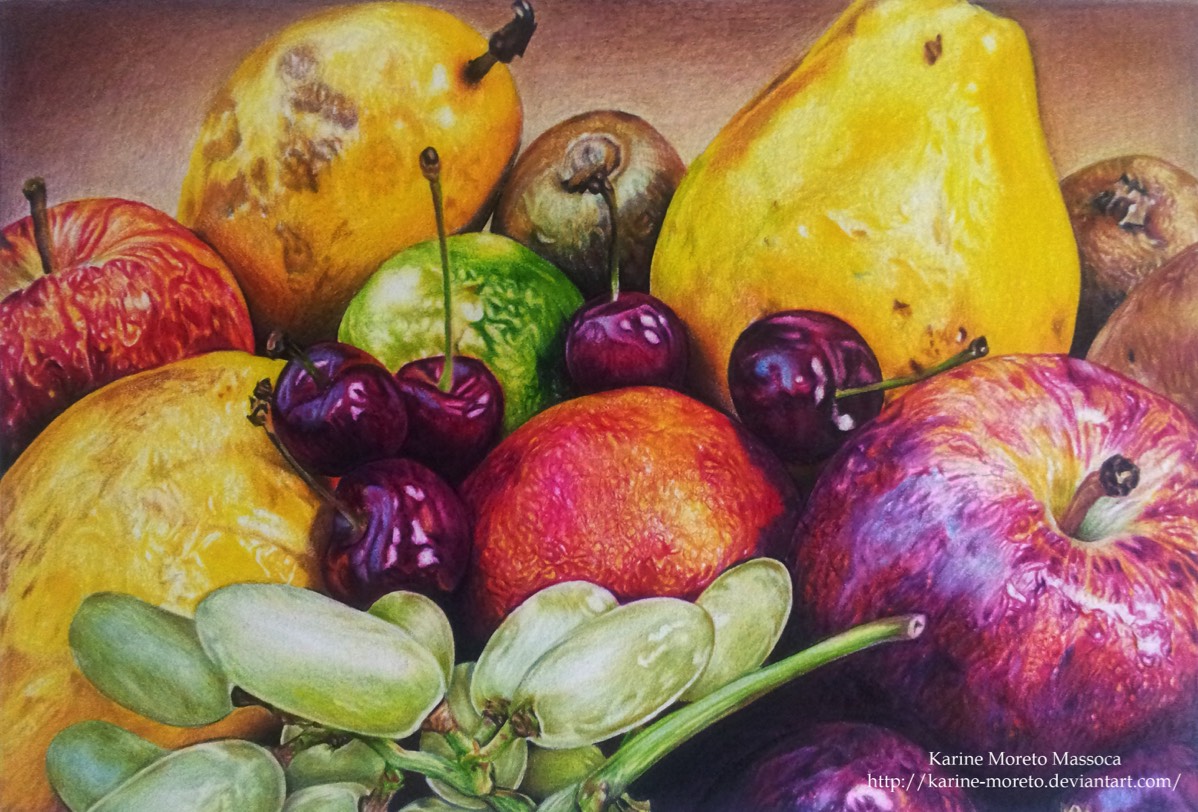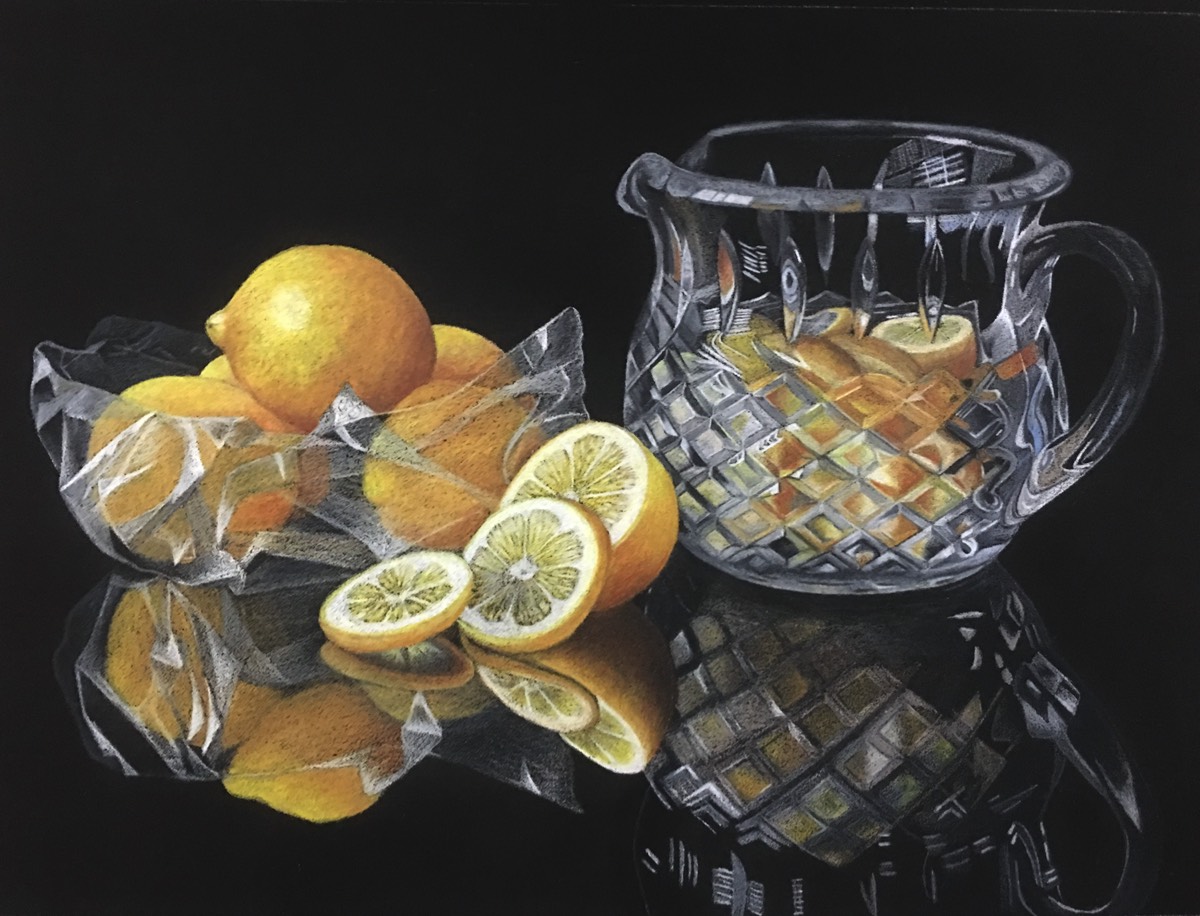Color Pencil Still Life Project

Project Description:
The curriculum for 6-8th graders focuses on a portion of the elements and principles of design. The elements that are explored in class will help to create the backbone of student's middle school art experience. Line, value, color, texture and repetition are all investigated through the various projects completed in class. Students will develop observation and technical skills in drawing, painting, printmaking, sculpture, and various other art mediums.
Learning Targets:
The student will:
- Identify and create artwork based on the elements of art and on the principles of art.
- Demonstrate through their artwork how to use the elements of art to show movement and express feelings.
- Recognize, compare and use different media to create their artwork.
- Develop a respect and appreciation for the artwork of artists, including classmates' art.
- Recognize and compare differences in several art mediums.
- Create representational and abstract art.
- Learn to create depth in a 2-dimensional artwork using one and two point perspective.
- Communicate thoughts, feelings and experiences to others through art.
- Understand terms that are basic to art media, procedures and techniques, as well as art appreciation.
- Maintain a sketchbook for a variety of drawing assignments to perfect their hand-eye ability and drawing skill.
Enduring Understandings:
8th Grade students will develop an understanding of how generating ideas and planning can lead to expressive creations. Students will also have a better understanding of how color theory influences artists. Artists will communicate meaning through the visual arts.
Essential Questions:
What are the four blending techniques used in still life creation?
What makes a successful composition?
What is color theory?
How does an artist begin his or her work?
What are the elements and principles of design?
Rubric:
Rubrics have become popular with teachers as a means of communicating expectations for an assignment, providing focused feedback on works in progress, and grading final products. A rubric is a document that articulates the expectations for an assignment by listing the criteria, or what counts, and describing levels of quality from excellent to poor.
Rubrics are often used to grade student work but they can serve another, more important, role as well: Rubrics can teach as well as evaluate. When used as part of a formative, student-centered approach to assessment, rubrics have the potential to help students develop understanding and skill, as well as make dependable judgments about the quality of their own work. Students should be able to use rubrics in many of the same ways that teachers use them—to clarify the standards for a quality performance, and to guide ongoing feedback about progress toward those standards.
The rubric for the still life project can be viewed, downloaded and printed below. Enjoy
Element of Art
Color:
An element of art made up of three properties: hue, value, and intensity.
- Hue: name of color
- Value: hue’s lightness and darkness (a color’s value
changes when white or black is added) - Intensity: quality of brightness and purity (high
intensity= color is strong and bright; low intensity= color is faint and dull)
Artist: Paula Leopold
Paula Leopold has been teaching painting classes for over 35 years. She currently is teaching 5 ongoing weekly classes in the Denver, Colorado metro area with about 75 students attending. Paula also travel teaches to conventions and seminars throughout the country. She received her Certified Decorative Artist (CDA) certification from the Society of Decorative Painters. Paula teaches using a variety of mediums including oils, acrylics, watercolors and colored pencils. She is affiliated with many painting and colored pencil organizations.
When Paula is asked why she still enjoys teaching classes after so many years she says it is such a blessing to see a student accomplish success in their personal journey. It is truly rewarding to be just a small part of that process of art development in the lives of others and to see the delight it brings her students. God has blessed Paula with her wonderful supportive husband Bill for 48 + years who helps to lighten her load with all of his great technical support. They have 3 children, 7 grandchildren and yes, even 4 precious little great granddaughters.

Project Example

Project Demonstration
Supplies Needed
Project Supplies:
The student will need the following supplies to complete this assignment:
- Pencil (2H, HB)
- Paper
- Eraser
- Prismacolor Pencils
- Prismacolor Colorless Pencil
- Prismacolor Pencil Sharpeners
- Baby Oil for Blending
Student Work










